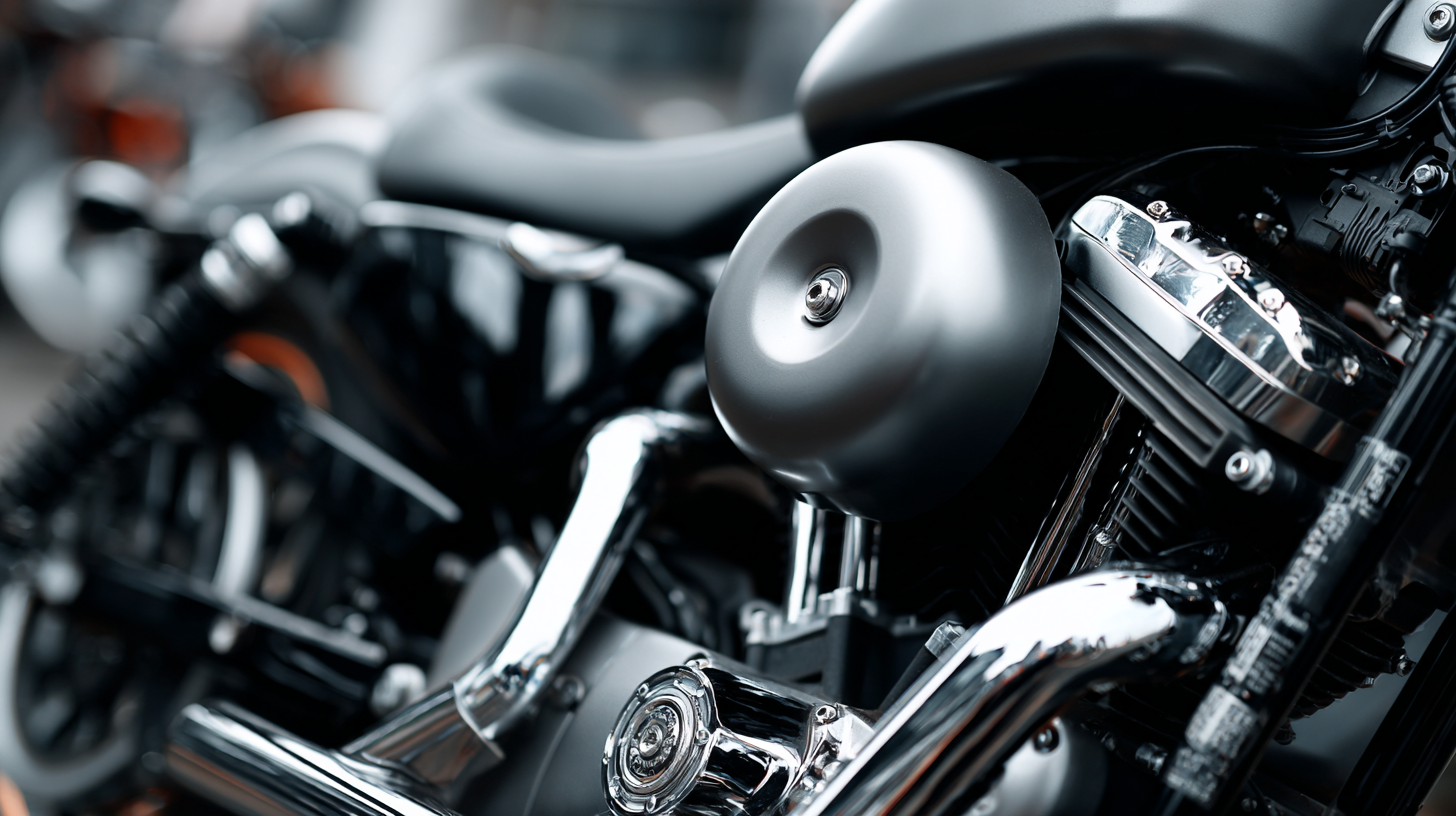In the rapidly evolving world of motorcycle manufacturing, sourcing high-quality Injection Molding Motorcycle Parts is crucial for achieving optimal performance and durability. As companies explore global suppliers, the complexity of the injection molding process can make it challenging to identify the most reliable and efficient sources. This ultimate checklist provides a comprehensive guide to comparing various suppliers, materials, and production techniques, ensuring that manufacturers can make informed decisions. With a focus on cost-effectiveness, quality control, and delivery timelines, this resource will help businesses navigate the competitive landscape and secure the best injection-molded parts that meet their specific needs. Whether you are a seasoned industry player or a newcomer, understanding the intricacies of sourcing injection molding motorcycle parts globally is essential for staying ahead in the game.

Understanding the global injection molding market trends for motorcycle parts is essential for manufacturers and suppliers looking to stay competitive. The market is influenced by various factors, including technological advancements, changing consumer preferences, and the rapidly evolving automotive industry. Injection molding has become a preferred manufacturing method due to its efficiency and precision, enabling companies to produce complex parts with exceptional accuracy. This trend is particularly pronounced in the motorcycle sector, where lightweight and durable components are crucial for performance and safety.
As the global demand for motorcycles continues to rise, the injection molding market is expected to grow significantly. Key trends include an increasing shift toward sustainable materials and the incorporation of advanced manufacturing technologies, such as 3D printing. The integration of 3D printing into traditional manufacturing processes is revolutionizing the way parts are produced, allowing for greater customization and faster turnaround times. This combination of injection molding and 3D printing not only enhances production efficiency but also opens up new avenues for innovation in motorcycle design and performance.
This bar chart illustrates the market share of different materials used in injection molding for motorcycle parts globally. As observed, plastic dominates the market, followed by metal and rubber composites.
When sourcing injection-molded motorcycle parts, material selection is paramount to ensuring optimal performance. According to a report by the Plastics Industry Association, the global market for injection-molded plastics is expected to reach $345 billion by 2025. This surge underscores the importance of choosing high-quality materials that not only meet mechanical specifications but also enhance the durability and reliability of the components.
Materials such as ABS (Acrylonitrile Butadiene Styrene) and polycarbonate are favored for their strength, impact resistance, and lightweight properties, making them ideal for critical motorcycle parts.
In addition to traditional materials, advanced composites are gaining traction in the motorcycle industry. A recent study by Grand View Research highlighted that the demand for composite materials is projected to grow at a CAGR of 8.4% from 2021 to 2028. These materials, including carbon fiber and fiberglass, offer significant weight reductions without compromising structural integrity. This is particularly crucial in motorcycle design, where performance and safety are interconnected. By carefully analyzing the material properties and processing requirements, manufacturers can maximize injection molding efficiency and produce components that meet stringent industry standards.
Evaluating supplier capabilities is crucial when sourcing injection molding motorcycle parts globally. The first metric to consider is production capacity. Understanding a supplier’s ability to meet demand, including their machinery and workforce resources, will help you assess whether they can consistently deliver the volume required during peak times. Additionally, you should evaluate lead times; suppliers with shorter lead times can help accelerate your production cycle and respond more swiftly to market changes.

Another important metric is quality assurance processes. Suppliers should have robust quality control measures in place, including regular inspections, certifications, and compliance with industry standards. This not only ensures that the parts meet specified requirements, but also builds a foundation of trust between you and the supplier. Finally, examining their previous client feedback and case studies provides insight into their reliability and ability to adapt to customer needs. By carefully analyzing these metrics, you can secure a partnership with a supplier that aligns with your quality expectations and production goals.
When it comes to sourcing the best injection molding motorcycle parts globally, understanding the balance between quality and affordability is crucial. Cost analysis plays a vital role in this process, as manufacturers must evaluate their production methods and materials to ensure they meet industry standards without overshooting their budgets. Utilizing advanced techniques such as 3D-printed molds for injection molding allows for reducing initial investment costs while ensuring quick and precise part production. This innovative approach not only cuts down on manufacturing time but also provides a flexible solution that can adapt to different design requirements.
Furthermore, companies exploring options for the production of motorcycle parts should consider the implications of raw material choices on overall expenses. High-quality plastics like PET or advanced natural fiber composites can enhance product performance but may come at a higher cost. However, investing in these materials can yield long-term savings by increasing part durability and reducing the need for frequent replacements. Thus, a comprehensive understanding of cost structures, from setup expenses to material sourcing, empowers manufacturers to make informed decisions that harmonize quality with affordability.

Navigating the complexities of regulatory compliance and quality standards in motorcycle parts production is crucial for sourcing the best injection molding components. The motorcycle tire market, for instance, is expected to witness significant growth, with projections indicating an increase in demand driven by various motorcycle types, including standard, sports, cruiser, and touring models. According to recent industry analysis, the global motorcycle tire market size is anticipated to reach several billion dollars by 2026, with a CAGR surpassing 5% during the forecast period.
To remain competitive, manufacturers must adhere to stringent quality standards governed by international regulations. This compliance is particularly vital when dealing with injection-molded parts that need to meet safety and performance criteria for different motorcycle types. Monitoring and documenting certifications, such as ISO 9001 for quality management systems, ensures that parts not only fit the market requirements but exceed customer expectations. Additionally, integrating advanced technologies like automation and data analytics in production can enhance compliance processes, reducing the risk of non-conformance in an ever-evolving regulatory landscape.
| Criteria | Details | Importance Rating (1-5) | Compliance Standards |
|---|---|---|---|
| Material Quality | Use of high-grade plastics that meet industry standards | 5 | ISO 9001, ASTM |
| Supplier Certifications | ISO, QS, and other relevant certifications | 4 | ISO 13485, IATF 16949 |
| Production Process | Injection molding process efficiency and waste reduction | 4 | Lean Manufacturing Standards |
| Continuous Quality Control | Regular testing and quality checks throughout production | 5 | Six Sigma, SPC |
| Traceability | Ability to track products through the supply chain | 4 | ISO 26000 |
| Regulatory Compliance | Compliance with local and international regulations | 5 | CE, RoHS |
